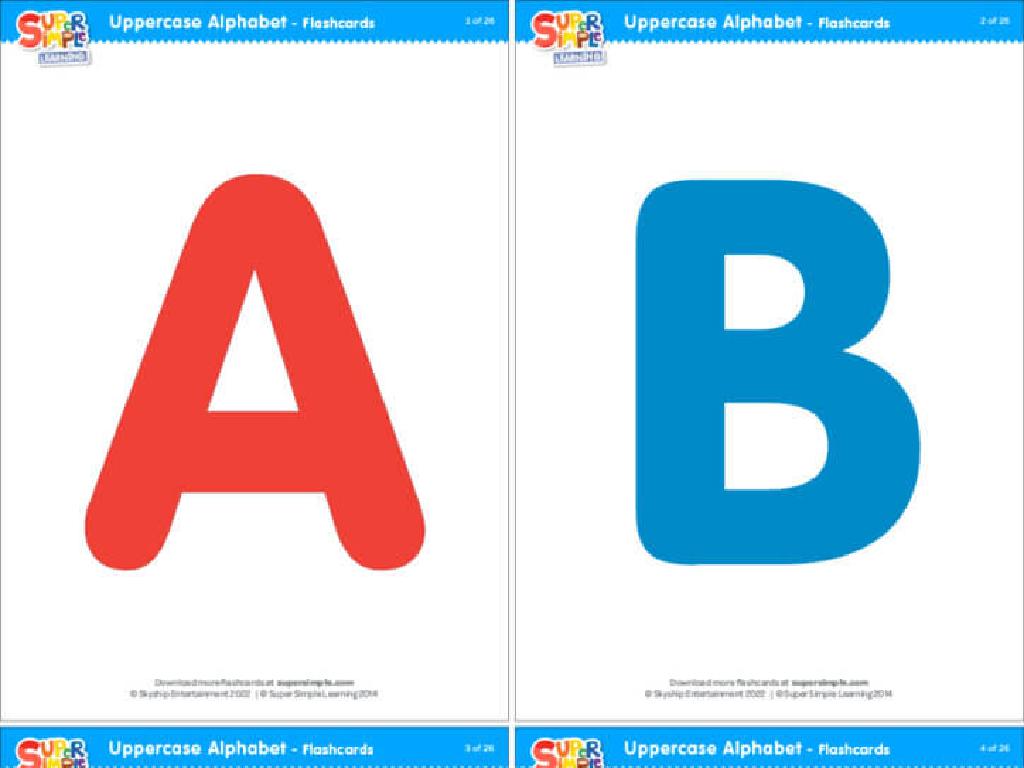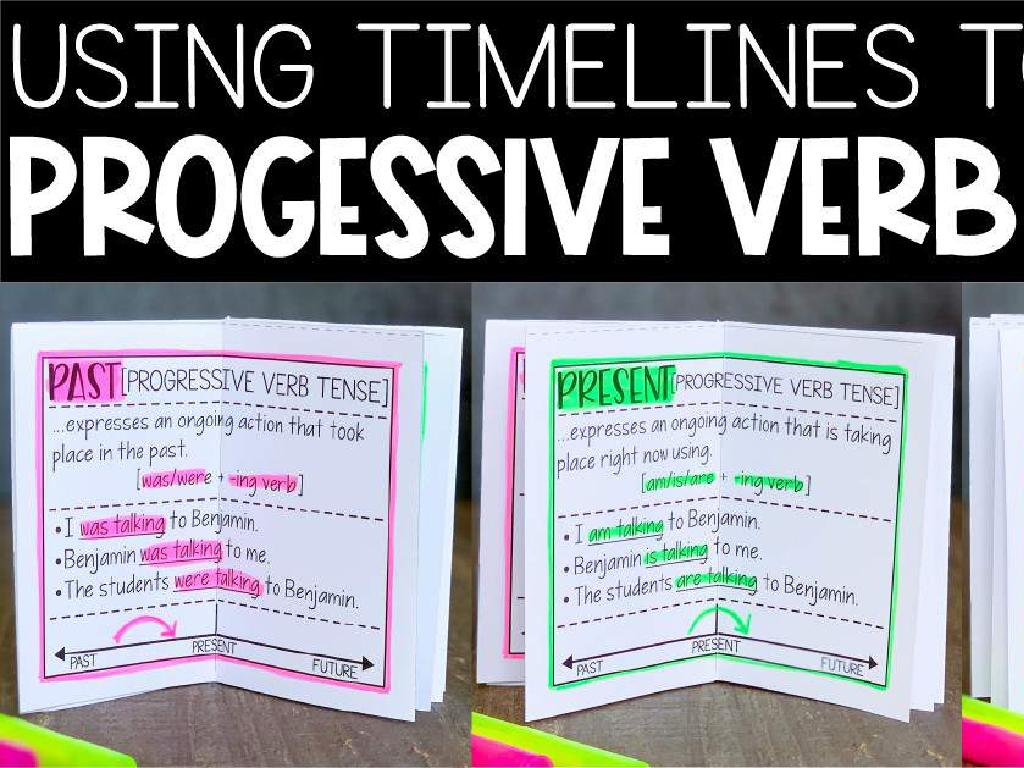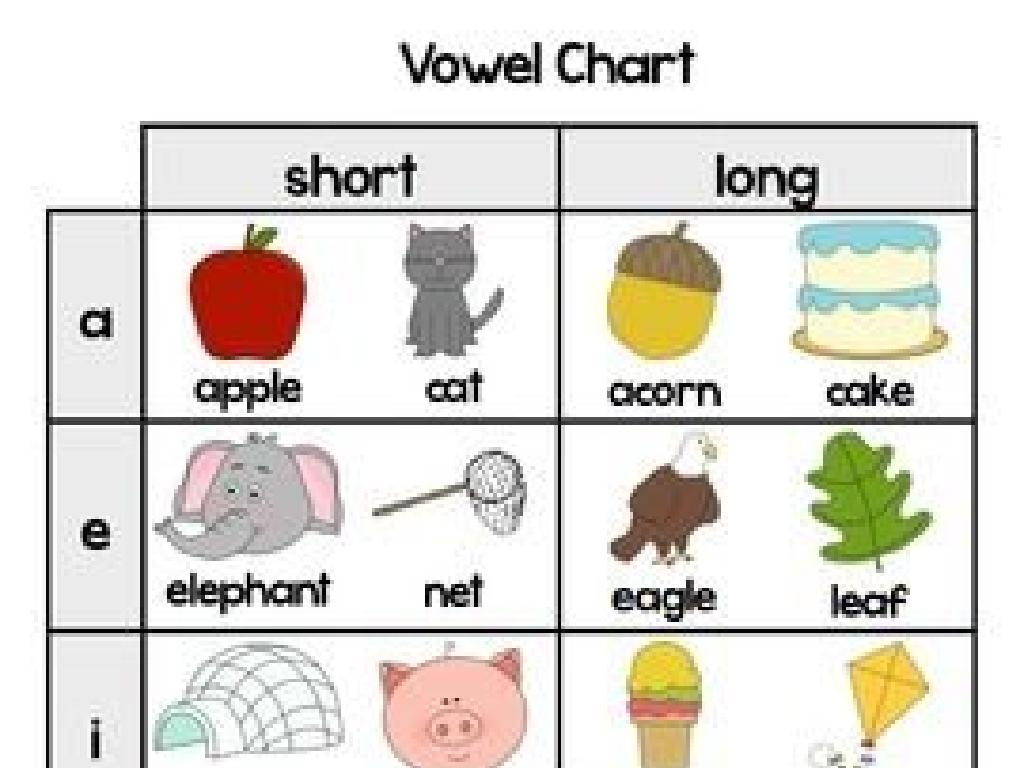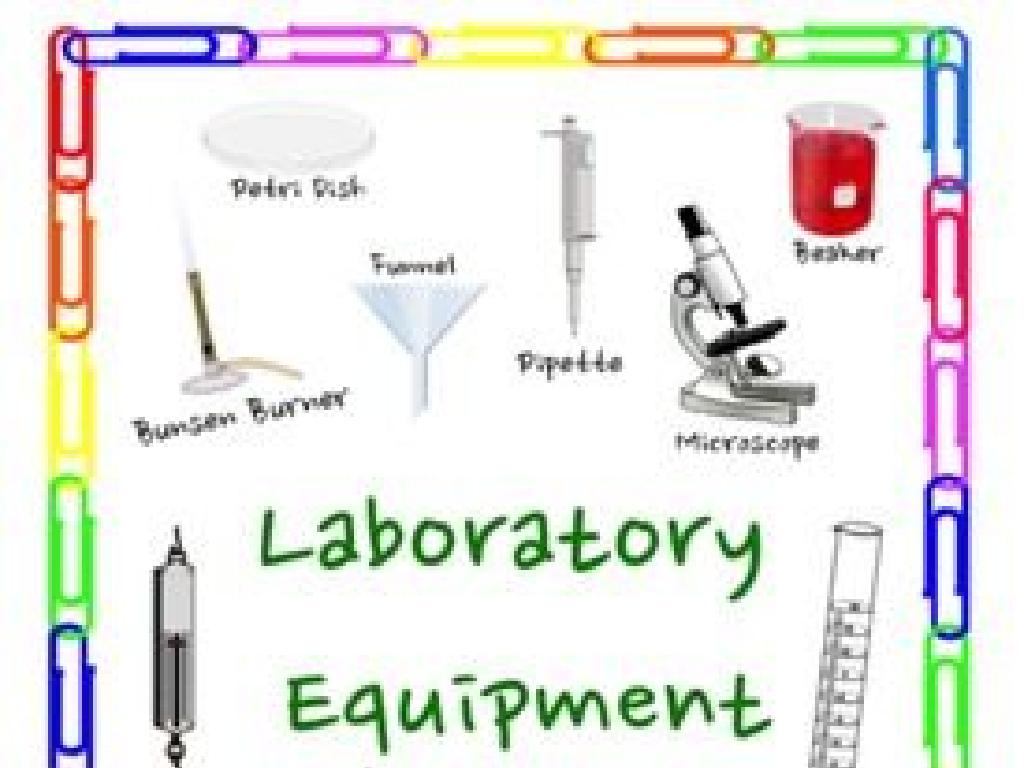Form Compound Words
Subject: Language arts
Grade: Fourth grade
Topic: Compound Words
Please LOG IN to download the presentation. Access is available to registered users only.
View More Content
Welcome to Compound Words!
– Definition of compound words
– Two words combined to create a new meaning
– Everyday compound word examples
– Examples: ‘basketball’, ‘toothbrush’, ‘sunflower’
– How two words join to form one
– Like ‘pancake’: ‘pan’ + ‘cake’ makes a new word
– Practice with common examples
|
Introduce the concept of compound words to the students by defining them as two words that come together to form a new word with a new meaning. Provide familiar examples that they encounter in their daily lives to make the concept relatable. Explain the process of how two individual words can be joined to create a compound word, emphasizing the idea that the new word has its own unique meaning. Engage the class with practice examples, asking them to identify or create their own compound words. This will help solidify their understanding of the concept and how it applies to language.
Building Blocks of Language: Compound Words
– Words as building blocks
– Combining words creates new meanings
– ‘Snowman’ combines ‘snow’ and ‘man’ to mean a figure made of snow.
– Compound words in sentences
– ‘Pancake’ in a sentence: I had a pancake for breakfast.
– Examples of compound words
– ‘Basketball’, ‘toothbrush’, ‘mailbox’
|
This slide introduces the concept of compound words to fourth-grade students, emphasizing that single words are like building blocks of language. When combined, these words can create new, unique meanings. Students should understand that a compound word is formed when two or more words are put together to make one word with a new meaning. Provide examples of compound words and show how they are used in sentences to enhance comprehension. Encourage students to think of compound words they already know and use daily. This will help them grasp the concept that language is dynamic and creative.
Types of Compound Words
– Closed Compound Words
– Words joined together, like ‘notebook’ or ‘sunflower’
– Hyphenated Compound Words
– Words connected by hyphens, e.g., ‘mother-in-law’, ‘check-in’
– Open Compound Words
– Words with space in between, such as ‘post office’, ‘full moon’
|
This slide introduces students to the concept of compound words and their types. Closed compound words are two words combined to create a new meaning without any spaces or hyphens. Hyphenated compound words are connected by hyphens and often involve more than two words. Open compound words are two words that are often used together but are separated by a space. Encourage students to think of additional examples for each type and discuss why some words are closed, hyphenated, or open. This will help them understand how compound words can change in form but still represent a single idea or object.
Let’s Make Compound Words!
– Combine two words to make one
– Share your compound words with the class
– Discuss the meanings of your new words
– How does combining change the meaning?
– Understand how compound words work
– Compound words blend two words to express a new concept
|
This slide introduces an interactive class activity focused on creating compound words. Students will select pairs of words and combine them to form new compound words. Encourage creativity and exploration of language. After forming their compound words, students will share them with the class, fostering a collaborative learning environment. Discussing the meanings of these new words will help students understand how compound words can change the meaning from the original words and how they are used in everyday language. For example, ‘sun’ and ‘flower’ become ‘sunflower’, which is a type of plant. Provide guidance on how to think critically about word combinations and their meanings. Possible activities include word matching games, compound word treasure hunts, or creating compound word stories.
Compound Word Hunt Activity
– Find compound words in a story
– Highlight or list the compounds
– Discuss compound words’ role
– How do compound words enhance the story’s details?
– Share findings with the class
|
This activity is designed to help students recognize and understand compound words within the context of reading. Provide a short, engaging story appropriate for fourth graders. Instruct students to look for compound words as they read and either highlight them in the text or write them down in a list. After identifying the words, facilitate a discussion on how these compound words contribute to the story, such as making descriptions more vivid or the narrative more engaging. Encourage students to think about why the author might have chosen to use compound words. Conclude the activity with students sharing their findings with the class, fostering a collaborative learning environment.
Create Your Own Compound Words
– Invent new compound words
– Combine two words to make one
– Draw your compound word
– Illustrate your unique word
– Present to the class
– Share your word and drawing
|
This slide introduces a creative class activity where students will use their imagination to form new compound words. A compound word is made when two words are joined to form a new word with a combined meaning, like ‘sunflower’ or ‘basketball’. Encourage students to think of familiar objects, animals, or actions and combine them to create interesting compound words. They should then draw a picture that represents this new word, helping to visually convey its meaning. During the next class, each student will have the opportunity to present their word and illustration, explaining the reasoning behind their creation. This activity fosters creativity, vocabulary building, and public speaking skills.
Class Activity: Compound Word Creators!
– Pair up and list compound words
– Mix and match word cards
– Combine two words to form a new word
– Write a story with your words
– Use the new compound words creatively
– Share your story with the class
|
This activity is designed to help students understand and practice forming compound words. Start by explaining what compound words are and provide examples. Then, distribute word cards to the pairs and let them have fun combining them to create compound words. Once they have a list, challenge them to write a short story that includes the words they’ve made. This will help them see how compound words function in context. At the end of the activity, invite students to share their stories with the class, which will reinforce their learning and build confidence. Possible compound words to start with: ‘sunflower’, ‘toothbrush’, ‘mailbox’, etc. Encourage creativity and praise their efforts!
Compound Words: Review and Reflection
– Recap compound word concept
– Two words joined to form a new word with a combined meaning, like ‘sunflower’.
– Share today’s learning
– What new compound words did we discover today?
– Discuss daily use of compound words
– How might we use words like ‘toothbrush’ or ‘mailbox’ in our daily conversations?
– Encourage daily practice
|
This slide aims to consolidate the students’ understanding of compound words. Begin by revisiting the definition of compound words and examples. Engage the class by asking them to share the new compound words they’ve learned. Discuss practical applications of compound words in everyday language, such as ‘toothbrush’ for morning and night routines or ‘mailbox’ for sending and receiving letters. Encourage students to be mindful of compound words they come across in their daily lives and to practice using them in sentences to enhance their vocabulary and understanding of the concept.






